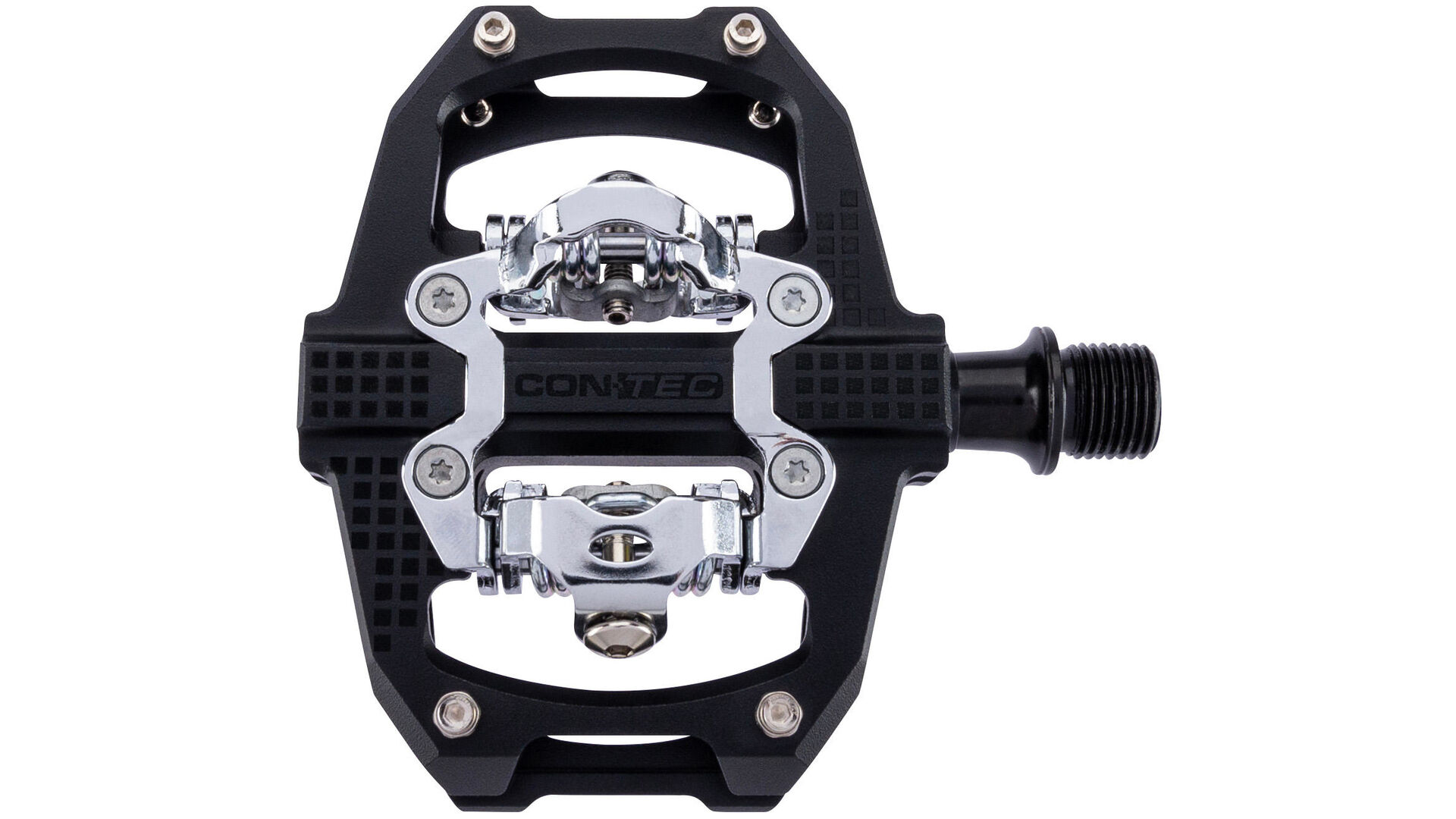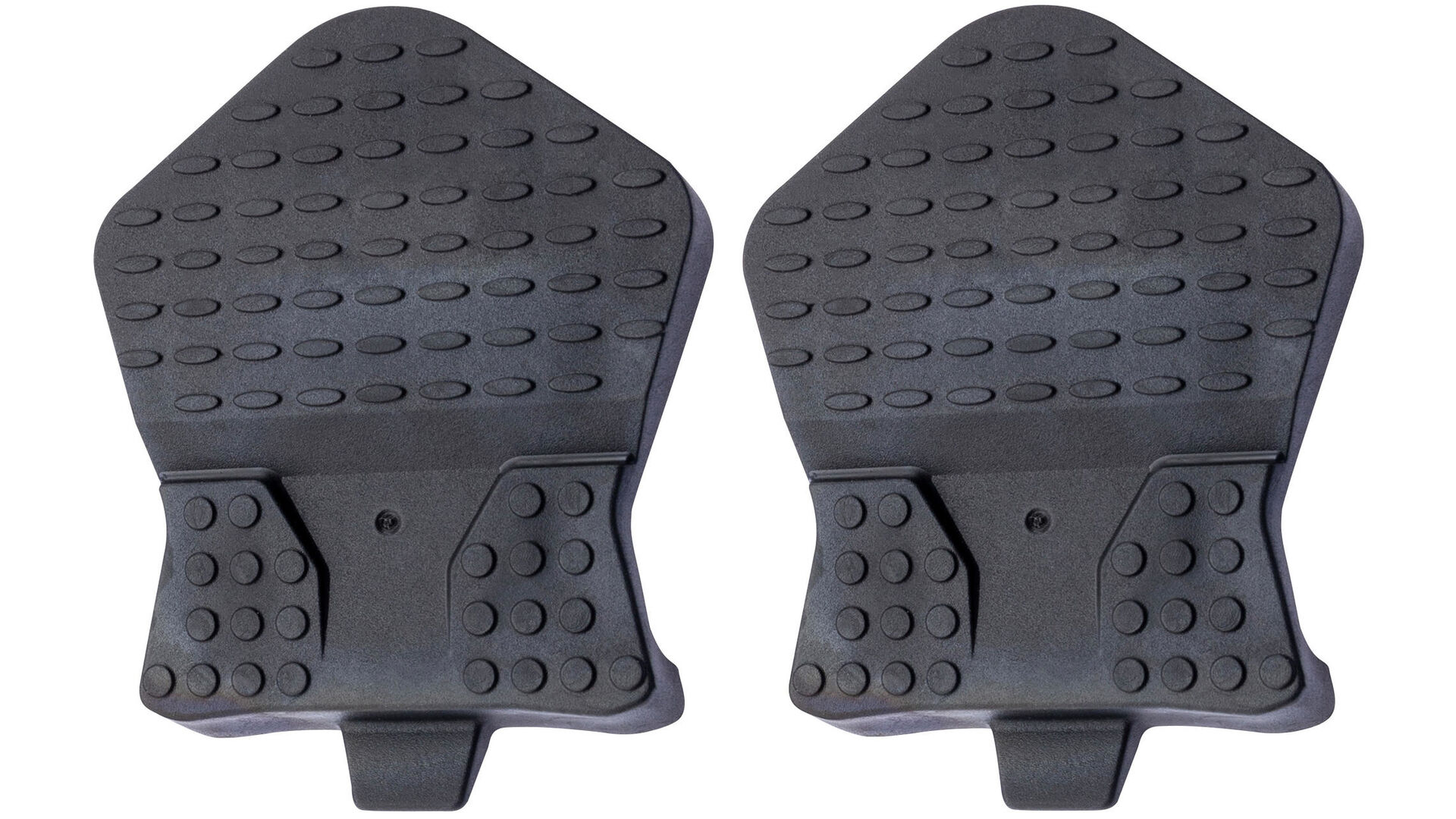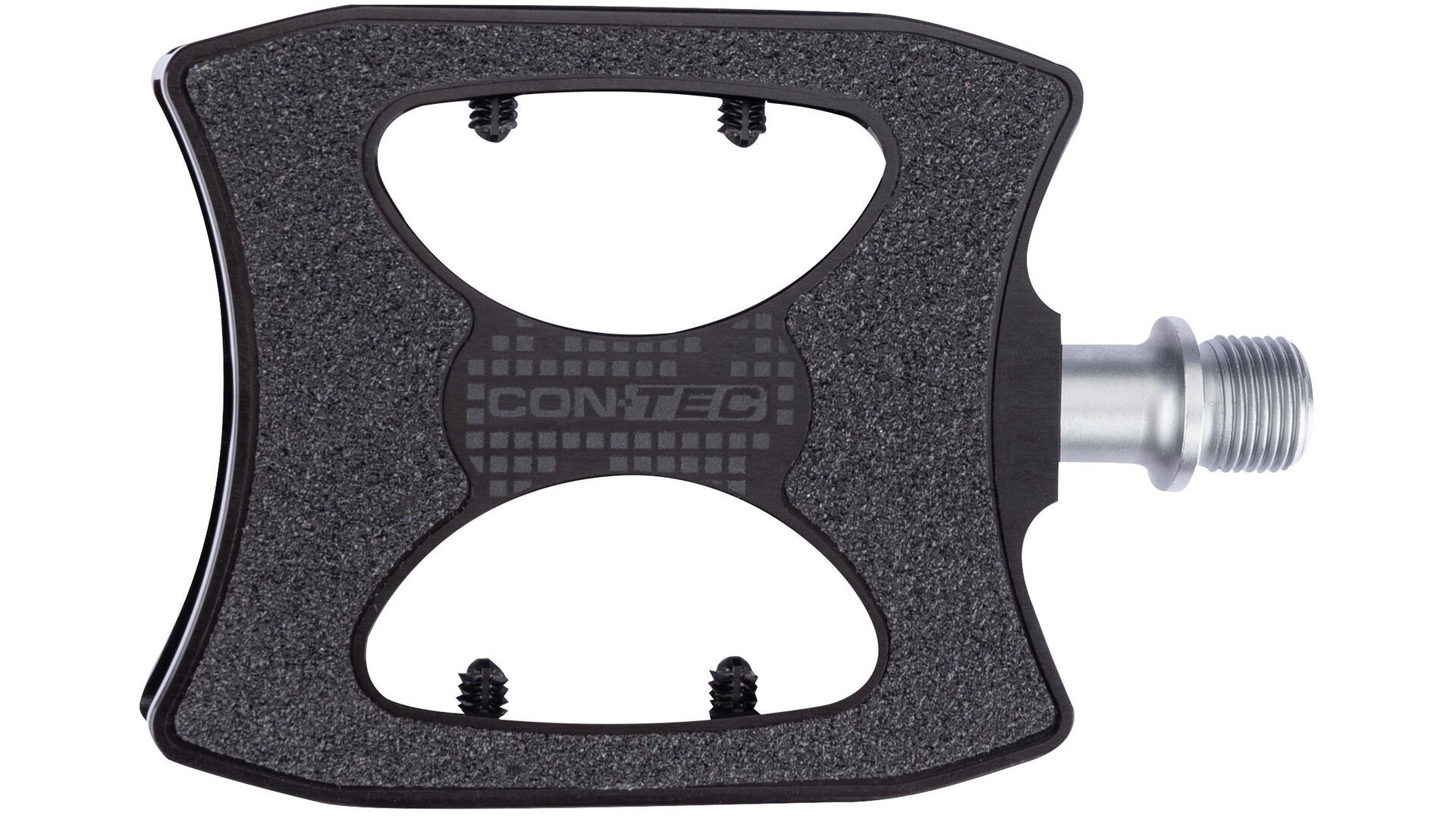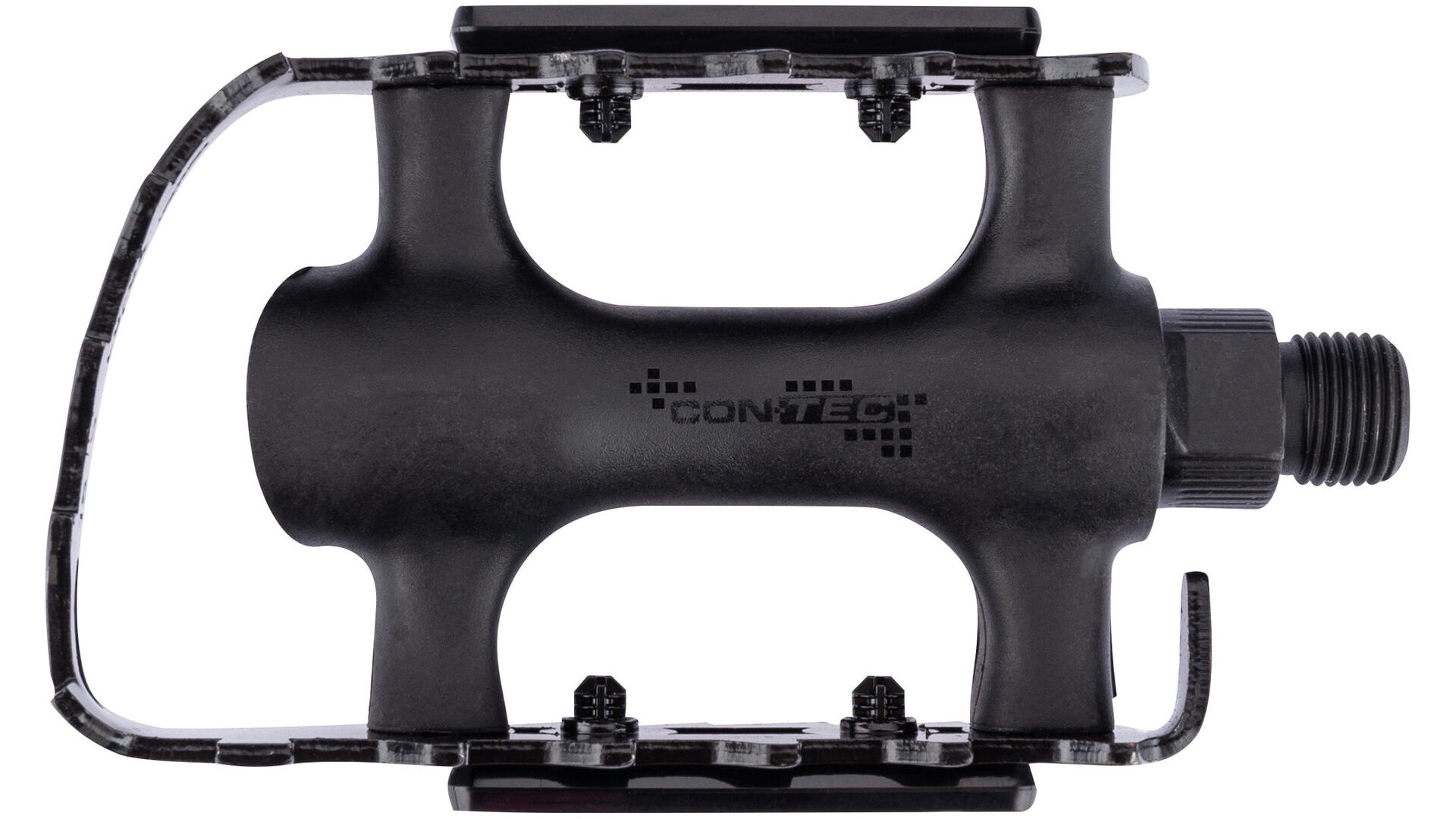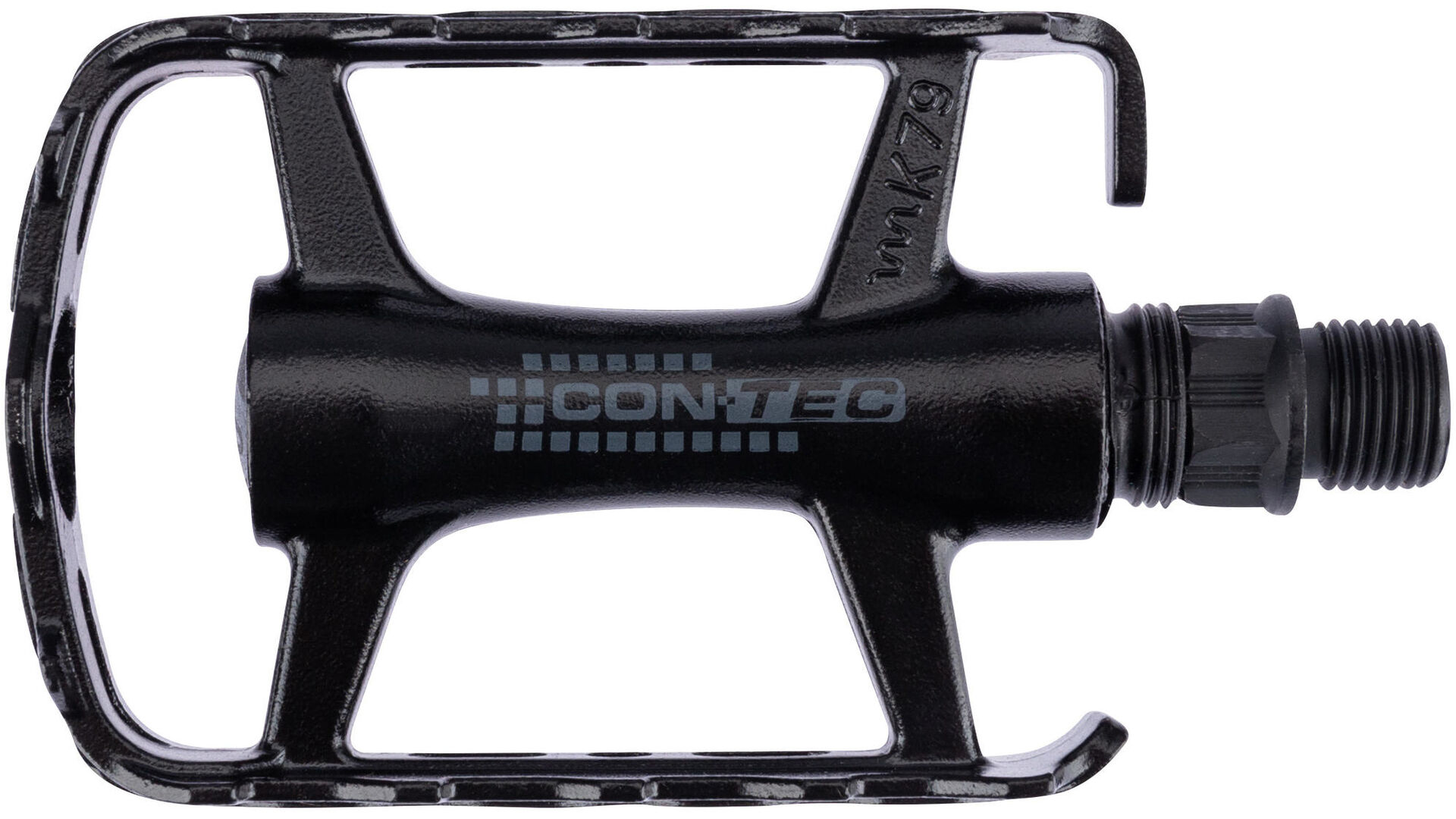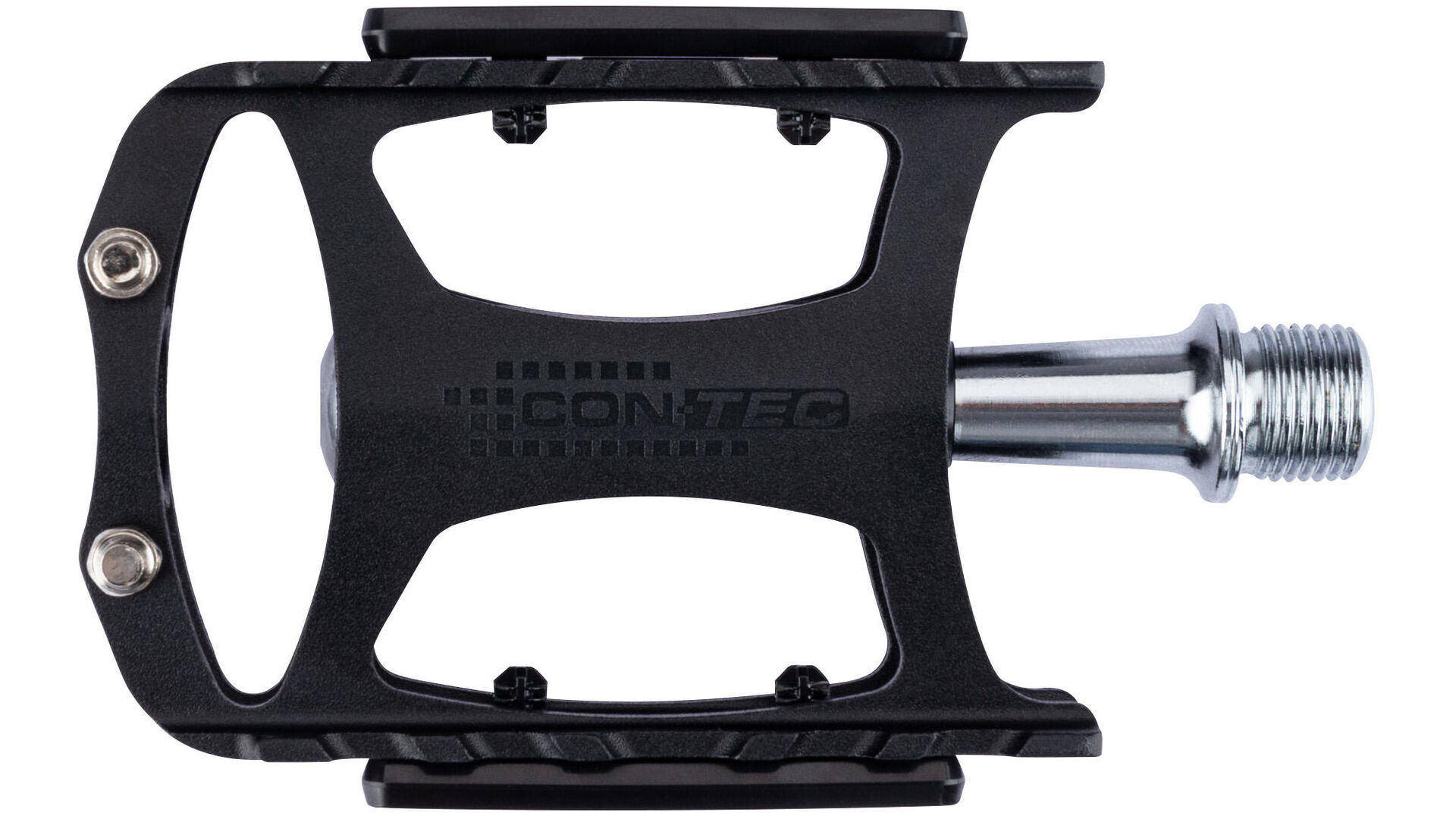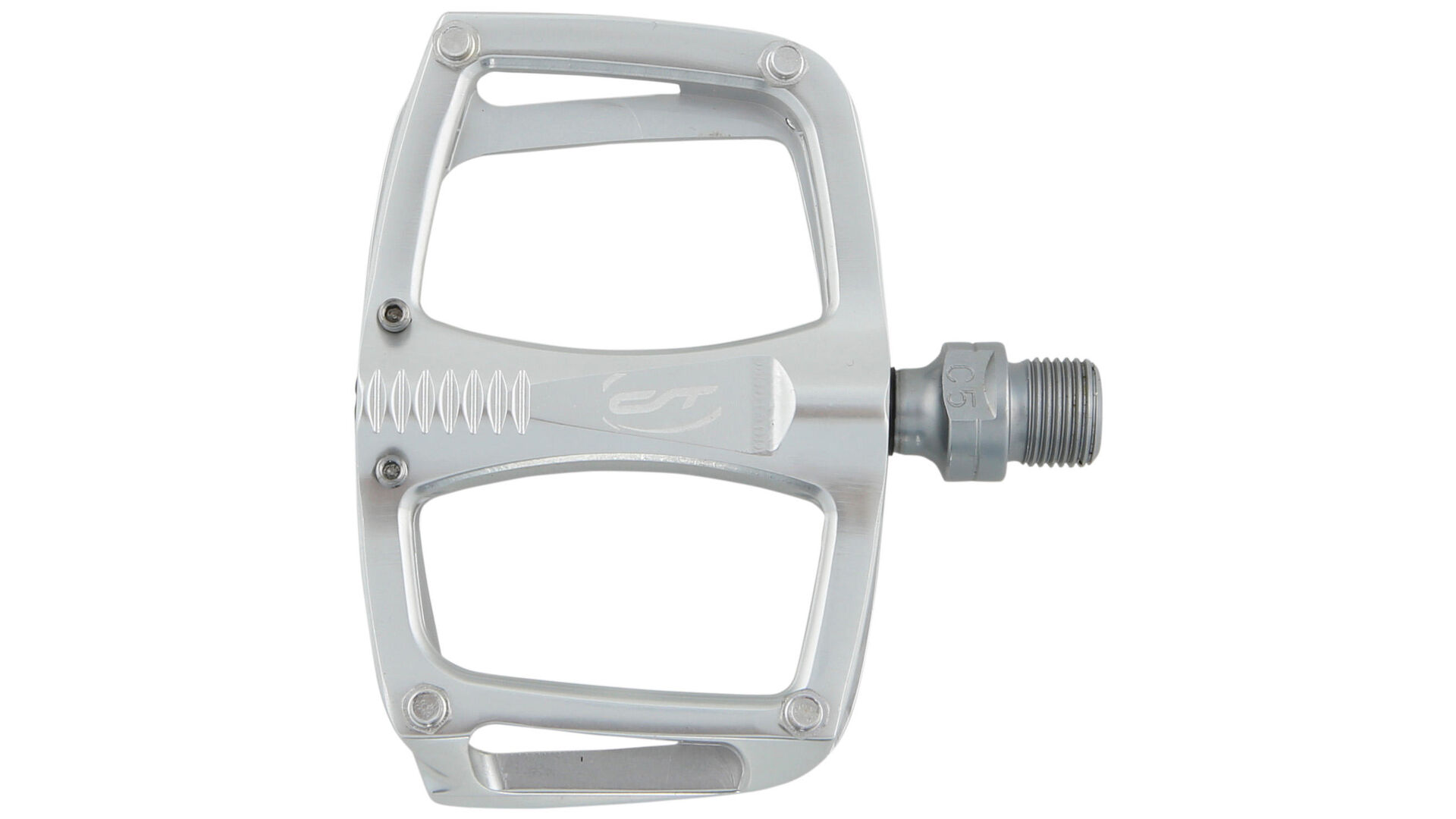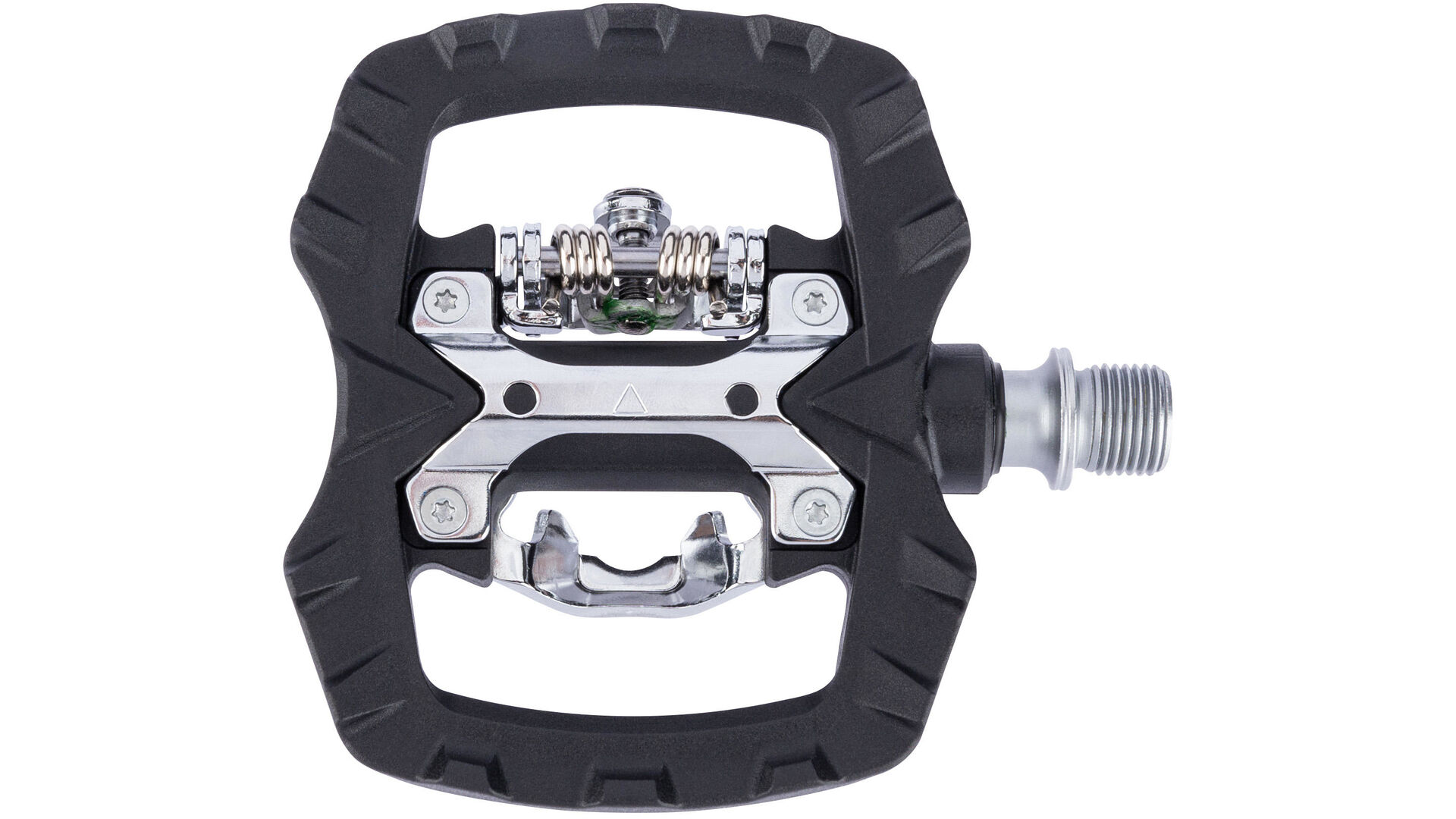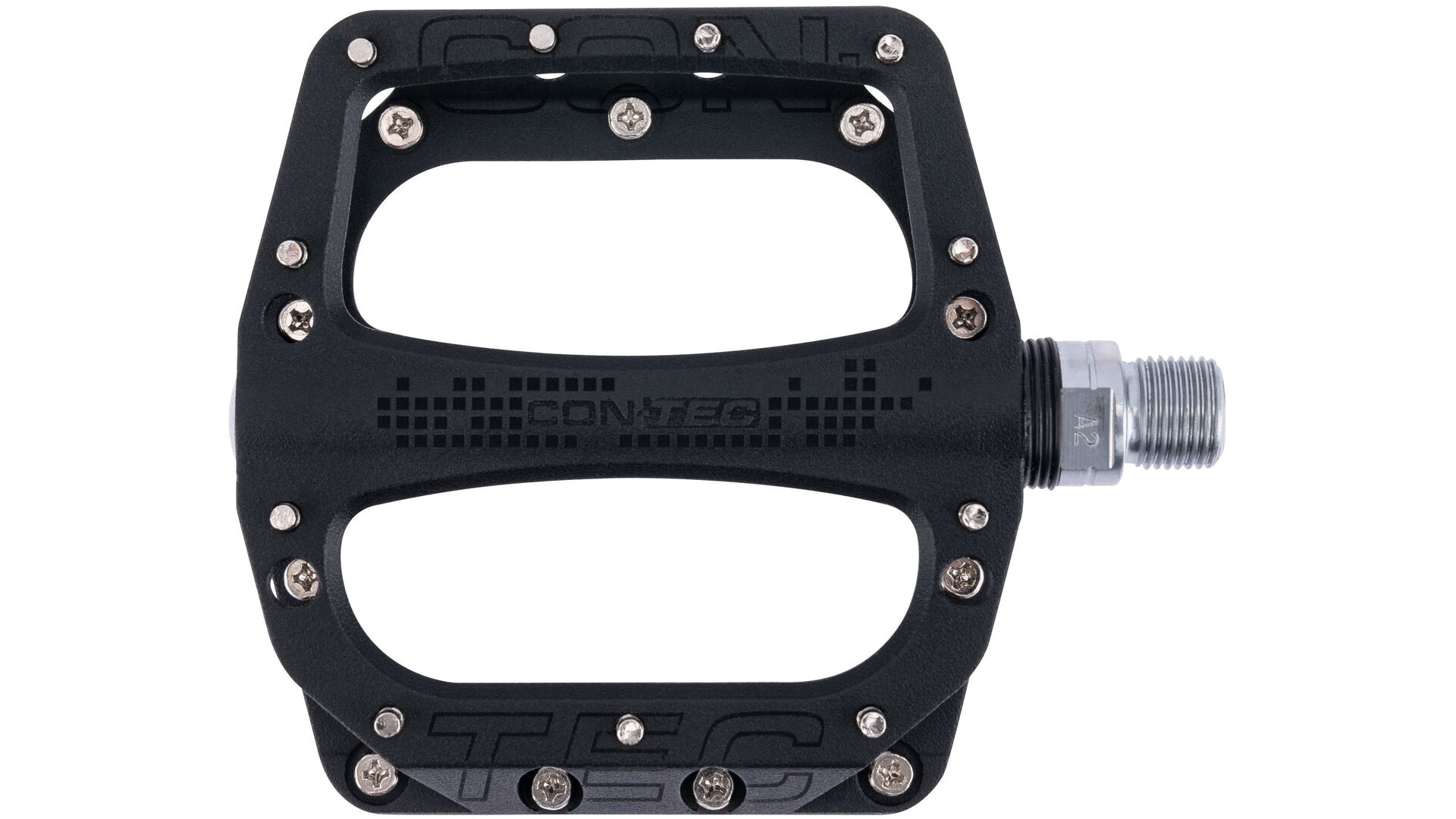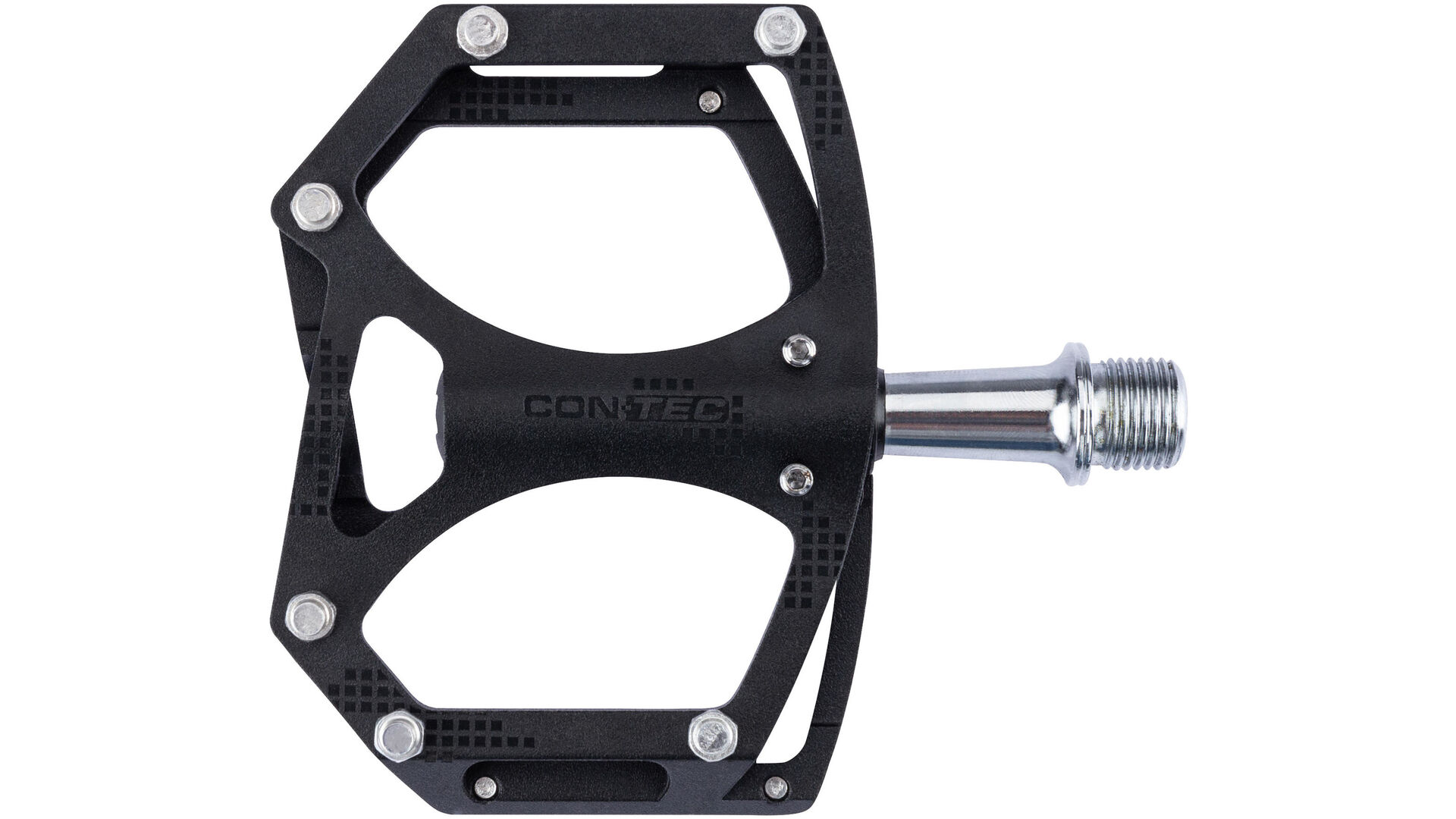Your ultimate pedal guide
Pedals are available in many different colours, shapes and weight classes, but keeping track of them is not so easy. That is why it’s worth taking a closer look at this diverse topic. Since the pedals that are fitted as standard on newly purchased bicycles aren’t alway the optimum, because grip and comfort requirements of each cyclist are different.
Our ultimate pedal guide will tell you which pedal is right for you. Whether mountain bikers, road cyclists or relaxed e-bike tourers – we find the right platform for you.
Which kinds of pedals are there?
Basically, pedals can be divided into five different shapes: Block, platform, clipless, combi and special. We explain the differences between these five variants, as well as their advantages and disadvantages.

Block pedal – the classic
The block pedal is probably the most well-known pedal: Two flat sides with a rough or rubberised surface. The majority of pedals also have reflectors attached to the sides for greater visibility in traffic.

The StVZO (Road Traffic Licensing Regulation) in Germany stipulates that bicycles that move in road traffic must have reflectors on the pedals. These are usually already assembled from the factory. If not, reflectors can be easily reassembled.
Benefits
- Maximum freedom: You're extra flexible and can freely reposition your foot on the pedal while riding
- Free selection: You don't need special shoes to ride on a bike with block pedals
- Getting on and off is not a big deal: at junctions or traffic lights, you can easily take your foot off the pedal
Disadvantages
- Interrupted power transmission: The power transfer is not optimal on block pedals, because the second half of a bottom bracket revolution loses a lot of energy because there is no connection between your "lifting" foot and the pedal
- Interaction: The support on a block pedal varies depending on the surface structure and the sole of the shoe – especially in wet conditions, the friction between the rubber can be slippery
Benefits
- Slush, leaves, stones and so on: They don't bother a platform pedal thanks to the many recesses
- Weight class: Platform pedals are usually lighter than block pedals
Disadvantages
- Not without profile: Flat soles are rather counterproductive on platform pedals – so that the rises and pins can really grip, they need a reasonable tread sole
- High demand: The wear of platform pedals is much higher than with "normal" pedals, so parts such as pins often have to be replaced or even the entire pedal has to be replaced
Platform pedal – the giant
The platform pedal is wider than an ordinary block pedal and usually has more cutouts. As it is mainly used in the sporty area by mountain bikers: A platform pedal quickly becomes dirty. So in order to prevent dirt from sticking to it, this type of pedal does not have a rough surface and keeps it simple with the material of the pedal body – this is usually aluminium or nylon. To prevent slipping, platform pedals are equipped with pins.

On rough rides, the pins can also break off and are worn out faster. For many platform pedals, there are spare pins available that can be easily retrofitted. Another plus: The pins are often available in different colours, so that your styling creativity knows now bounds!
Clipless pedal – the professional
Clipless pedals, also called system pedals, are mainly used in a sporting environment. Especially for gravelbike and road cyclists, the "Clickie" is a popular way to use the maximum energy when pedaling. But also for mountain bikers and enduro fans, the clipless pedal can be quite attractive.
With clipless pedals, both sides are equipped with a click system that, in combination with the matching cleat, connects the cyclist's foot to the pedal. What sounds like a dangerous matter for beginners is in fact easy to learn. The only thing you have to do is move the heel outwards to click out: A maneuver that is a bit tricky before getting off, but then quickly becomes a habit.
There are many systems for clipless pedals – the most common are SPD SL and Look Keo. The differences are not too big, but you should remember that the systems can not be combined with each other. Because every system also needs a suitable counterpart, in this case a cleat. The cleats are screwed to the shoe and have a recess for the corresponding pedals. You can get these shoes at the bike shop of your choice from brands such as fízík. When mounting the cleats on the shoe, you determine a permanent position of your feet. This takes a few attempts at the beginning, but then has the advantage that you always have the optimal position on the pedal every time you click in.

Cleats wear out. Due to the constant click-in and click-out as well as the exertion of force, the front part of the cleat can be quickly worn out. Since it is quite arduous to find the right position when replacing the cleat, there are also two-part cleats. The CONTEC Puzzle Cleats are divisible in the middle (like two puzzle pieces!), so you can change the two pieces to keep an indicator of the original position. Only replace the front part while the rear part remains on the pedal.
Benefits
- Maximum force exertion: With one revolution, you use all the energy from the first turn for the next revolution
- A blessing for habitual animals: The position of your foot on the pedal will always remain the same
- In the correct position, you even have the chance to gain an aerodynamic advantage
- Unconditional grip: No more kicks into the void thanks to a firmly clicked shoe
Disadvantages
- Filled shoe cabinet: To use clipless pedals, you need aligned shoes
- Initial difficulties: Especially at the beginning, the not yet learned quick click-out of the shoes can lead to accidents – so be careful! Practice makes perfect. Here, however, there are also different versions of cleats with inclinations for easier or more difficult exit. Our CONTEC Puzzle Cleats are great for beginners!
Combination pedal – the twin
If the combination or hybrid pedal had a slogan, it would be "the best of both worlds". As the name suggests, this pedal has two sides – a flat side and a side with "click", i.e. system. Of course, there are also all possible combinations with this type of pedal. For example, the flat side can be designed for the MTB riding and thus be particularly resistant to mud. Or the combination pedal is particularly light, which offers an advantage for gravel bikers.
Discover the CONTEC Puzzle Cleats here:

If you do not yet want to commit yourself to a clipless pedal or do not feel like changing the pedals before every ride, the combination pedal is the perfect solution. Especially for bicycles such as SUVs, which fulfil several purposes, the combi pedal can be switched from relaxed commuter mode to sport mode – provided the shoe fits!
Benefits
- Anxiety of attachment: With a combination pedal, you do not have to commit to one pedal type
- Practice makes perfect: For beginners, a combi pedal is the best exercise for a proper clipless pedal
Disadvantages
- Feelings of change: The necessary shoe replacement when changing to the other side can be annoying
Special pedal – the special one
This category will be difficult to define, after all, special pedal can mean anything. We limit this to our CONTEC range: Special pedals include, for example, folding pedals. These are similar in shape to a block pedal, but can be folded up/down. This is especially useful when you want to transport the bike, as you can get stuck with the pedals quickly. With folding bikes, folding pedals are part of the basic equipment anyway. Especially for commuters who take their bike on the train, a folding pedal is extremely helpful. A similar solution for the same purpose is a Quick Release pedal – also a special pedal. This can be removed and mounted quickly and tool-free, making the bike more compact for transport or parking in the garage.
The special pedals look like this:
Which pedal suits me?
Apart from the three different basic shapes, there are a variety of different materials and other conditions that distinguish one pedal from another. Here it is quite clear that the question is – what must a pedal be able to do for commuters? Which pedal is best for mountain bikes? Can I mount a flat pedal on a road bike? Everything is possible, nothing is a must. We'll give you a recommendation on what materials and shapes you can look for when choosing a pedal for your riding style.
City / commuter pedals
In road traffic, its safety first! Even if you're only traveling on country and dirt roads, your visibility should come first. Therefore, reflectors on pedals in traffic are also mandatory according to the StVZO. Here is an overview of all the other typical characteristics of a city pedal.
|
Shape
|
Surface
|
Material
|
Features
|
Find the right pedals for city riders and commuters:
Trekking pedals
For trekking bikers: It depends. Basically, you can also resort to the classic pedals of city riders and commuters on bike tours. However, a few other platform pedals are also interesting. Here, a lot depends on the predominant circumstances of your tour. Forest trails? Platform. Roads? Block. Remember that depending on the length of your tour, you will also have some wear and tear. The most important thing is that you feel safe and comfortable, because on longer trips, the choice of your bike parts affects your entire body. Factors such as ergonomics play a major role here.
|
Shape
|
Surface
|
Material
|
Features
|
Find the right pedals for trekking riders here:
Mountain bike / ATB / BMX pedals
The pedals of a sporty rider carry a lot of load. Whether on a mountain bike, ATB, downhill, freeride, enduro or BMX – what you definitely need is a lot of grip. Platform pedals are considered classic MTB and ATB pedals that are suitable for almost any terrain. A large tread and interchangeable pins give you freedom and support at the same time. However, combination pedals are also being ridden more and more frequently in these areas.
|
Shape
|
Surface
|
Material
|
Features
|
Find suitable pedals for mountain bikers, ATB and BMX riders:
Gravelbike pedals
A gravel ride can range from a small ride through the city to a multi-day bike-packing trip. The choice of gravel pedals is also variable. Here factors such as weight, function and design are taken into account in the decision. A typical Gravel pedal is a one- or two-sided clipless pedal.
|
Shape
|
Surface
|
Material
|
Features
|
Find the right pedals for gravelbike riders here:
Road bike pedals
For road cyclists, aerodynamics and weight are the key factors. Clipless pedals are actually a must here – the smaller and lighter the better.
|
Shape
|
Surface
|
Material
|
Features
|
Discover a suitable pedal for road cyclists:
Children / youth pedals
Pedals for children's bicycles need similar things than city and commuter pedals. Reflectors for sufficient visibility in traffic and a rough or rubberized surface for more grip are the go-to here. The only difference is the size – children's pedals are of course much smaller than the classic pedals for adults. There are also children's pedals with a 1/2" thread instead of the usual 9/16" thread.
|
Shape
|
Surface
|
Material
|
Features
|
Find the right pedal for children here:

Install the pedals
Once you've decided on a pedal for your riding style, check out our guide on how to mount it.







